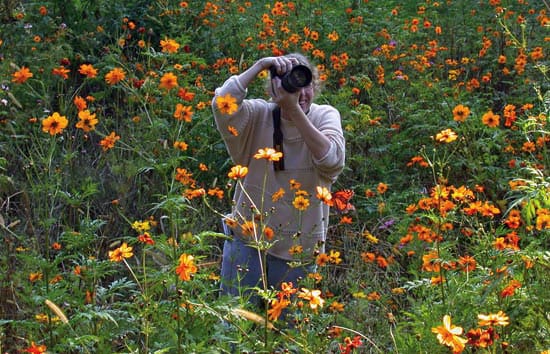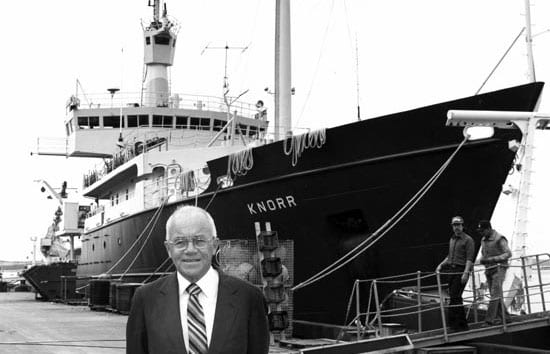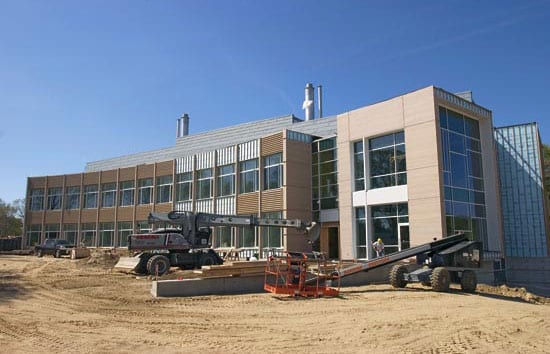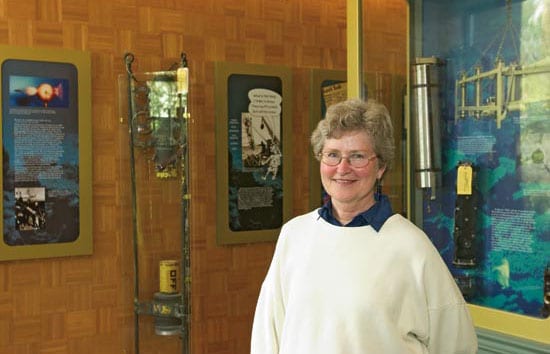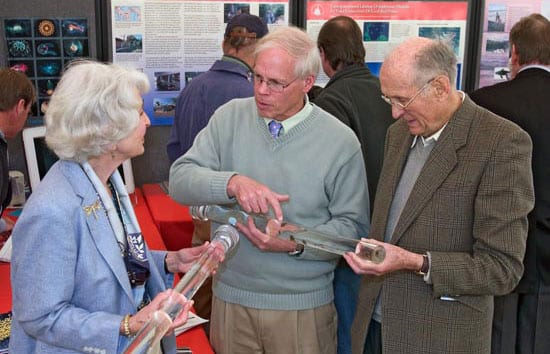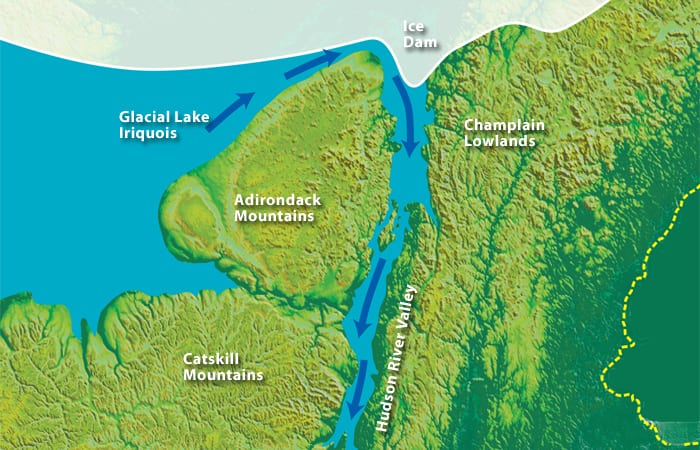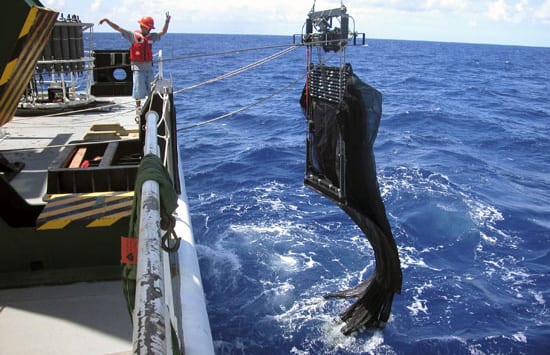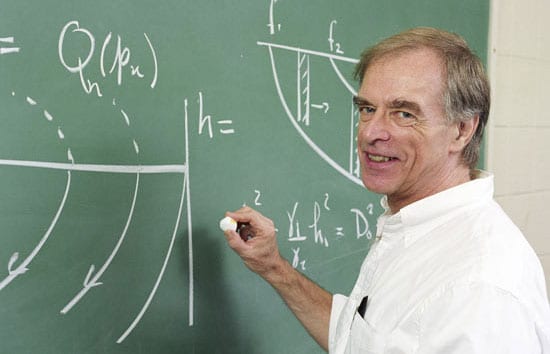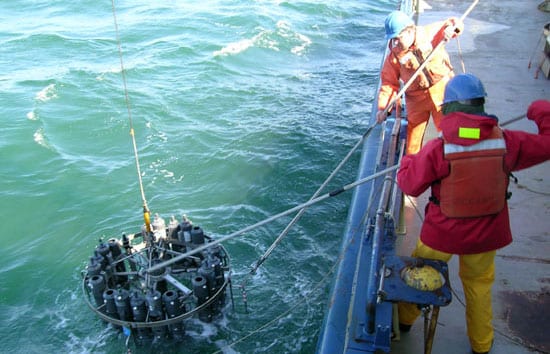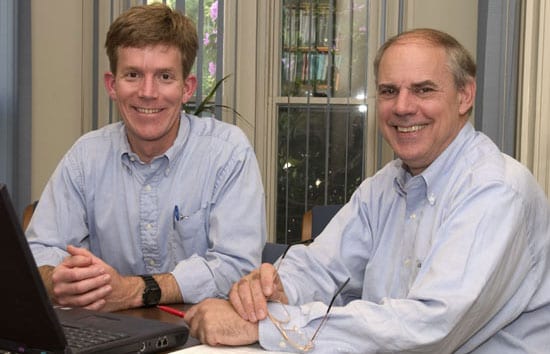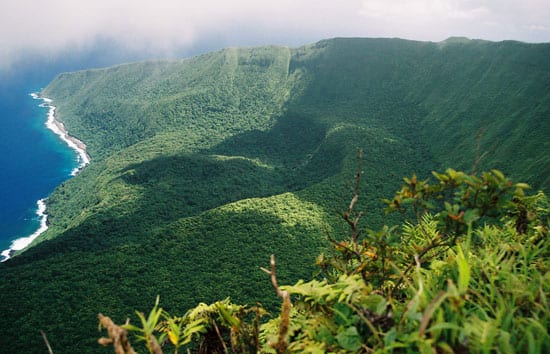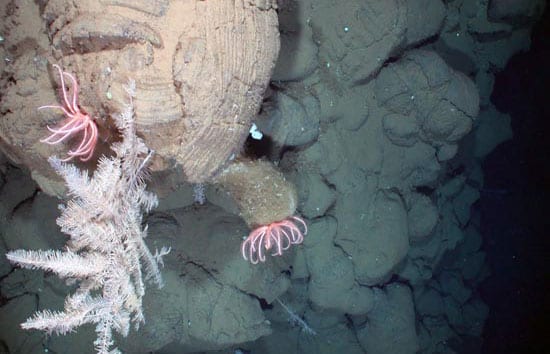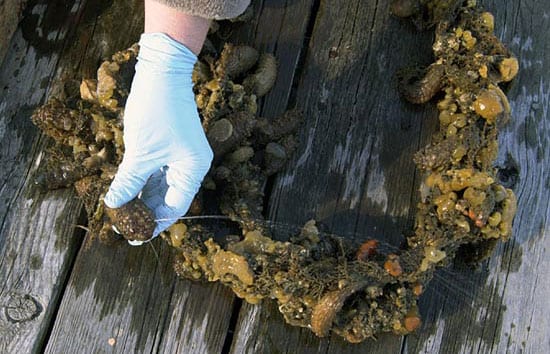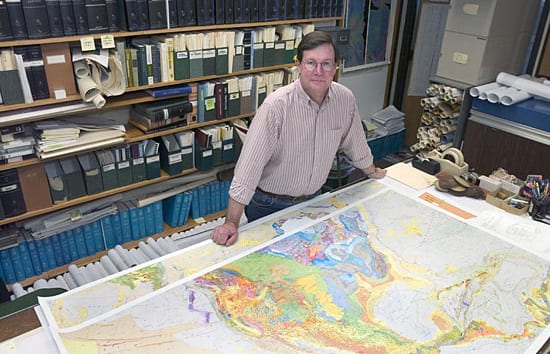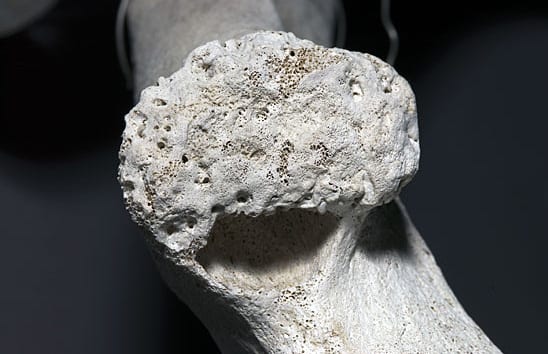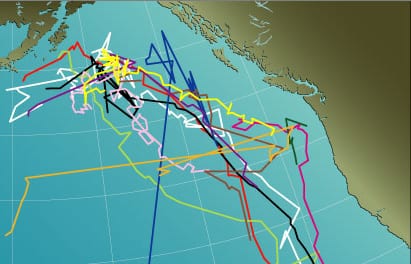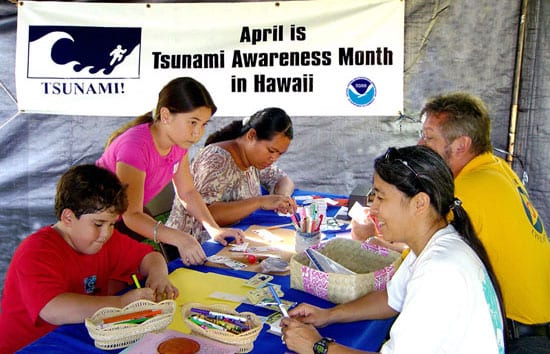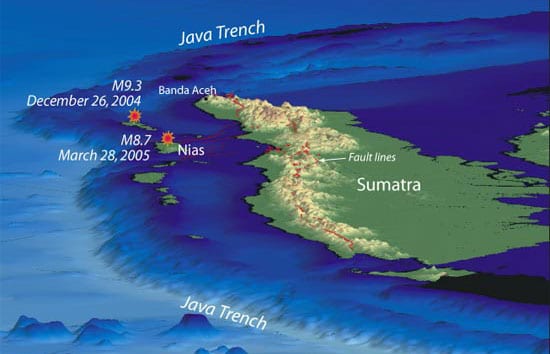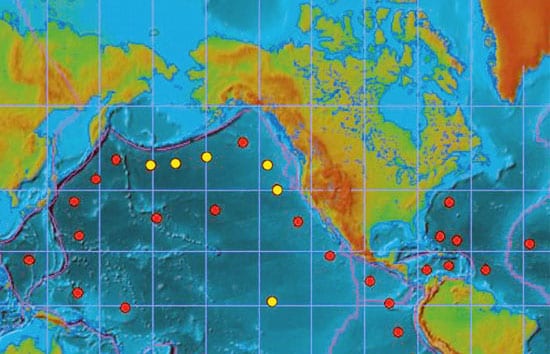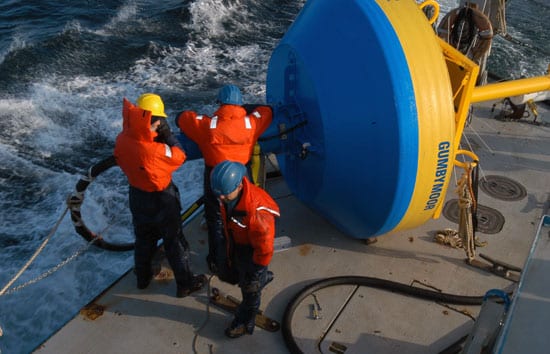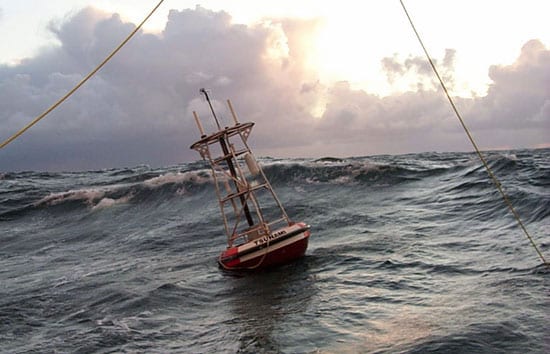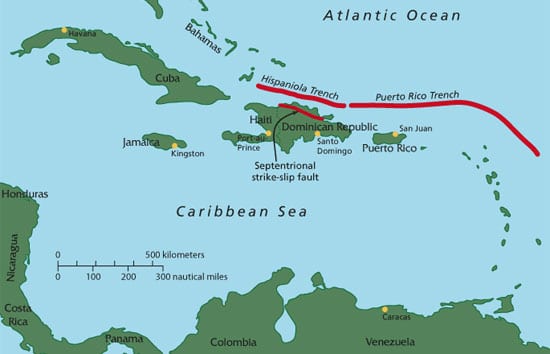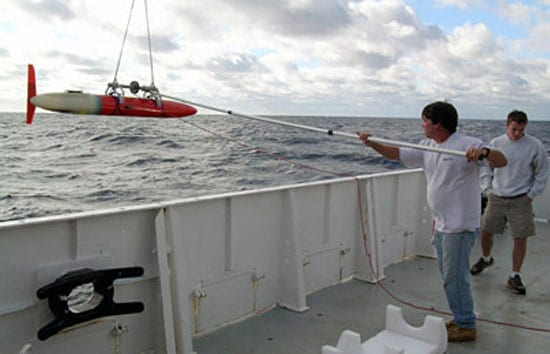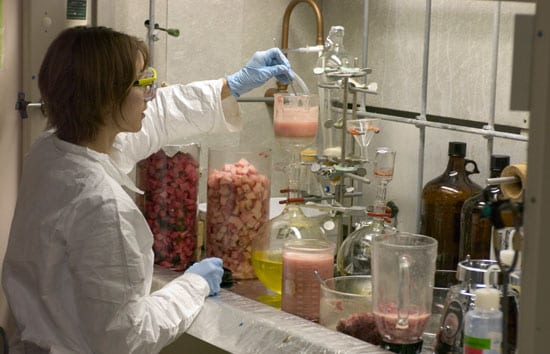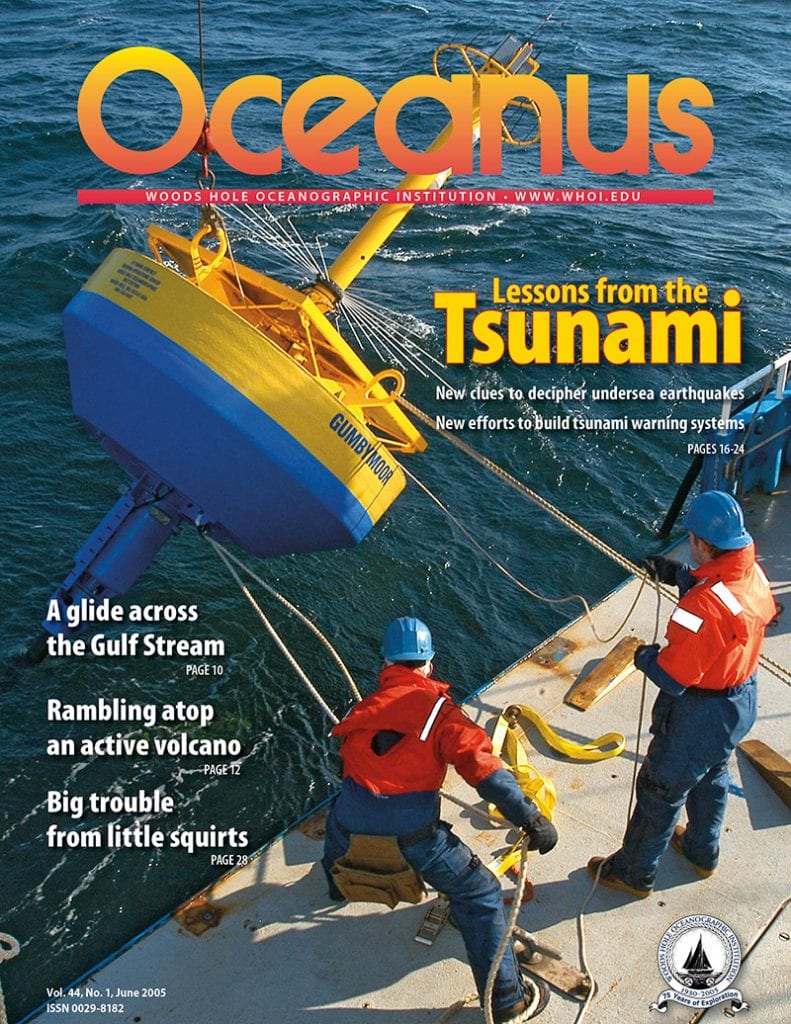
June 2005 ( Vol. 44 No. 1 )
and get Oceanus delivered to your door twice a year as well as supporting WHOI's mission to further ocean science.
Our Ocean. Our Planet. Our Future.
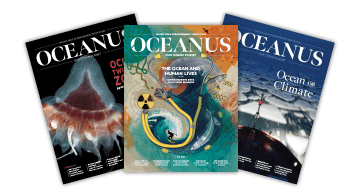
Remembering a Scientist/Student/Artist
Celeste Fowler joined the MIT/WHOI Joint Program (JP) in June 2003 and quickly made her presence felt.
Guy Nichols: Transforming Institutions
Guy Nichols never shied away from tough jobs. And he never lost sight of the fact that an organization needs all its people, not just those at the top.
Institution Celebrates 75th Birthday in 2005
WHOI celebrates 75 years of ocean research, education, and exploration this year with several events planned for August and September.
A Tropical Research Paradise
WHOI Trustees Frank and Lisina Hoch have issued a one-to-one $1.125 million challenge to seize new opportunities and expand the Institution's research in tropical regions.
The Great Flood of New York
An ice dam forming a large Ice Age lake collapsed 13,350 years ago, sending a flood down the Hudson River Valley and causing dramatic climate changes.
Checking the Forecast for 'Marine Snow'
The "rain" of tiny particles from sunlit surface waters to the deep ocean could play a key role in understanding global warming.
Fathoming the Ocean Without Ever Going to Sea
"The general circulation of the ocean is a massive and majestic phenomenon," says WHOI physical oceanographer Joe Pedlosky. In 2005, Pedlosky was awarded the prestigious Sverdrup Gold Medal of the American Meteorological Society for his theories explaining the inner workings of the ocean and the atmosphere. Not bad for an oceanographer who has never gone on a research cruise.
Seeing Red in New England Waters
Coastal resource managers shut down shellfish beds in three New England states in mid-May—including rare closures of Massachusetts Bay and Cape Cod Bay—because of an intense bloom of the toxic algae Alexandrium fundyense. Researchers from the Woods Hole Oceanographic Institution saw the 'red tide' coming before its toxic effects reached the shore.
Risks and Remedies from the Sea
Researchers from Woods Hole Oceanographic Institution, the Marine Biological Laboratory (MBL), and the Massachusetts Institute of Technology (MIT) have embarked on a novel collaboration to investigate harmful algal blooms, ocean-borne pathogens, and potential pharmaceuticals from marine sources.
Rambling Atop an Active Volcano to Detect Telltale Rumbling Within It
With machete in hand and 60 pounds of satellite receiver and tripod on his back, Jeff Standish looked up into the lush tropical brush that covered the volcano, up a steep escarpment, and up again to the summit 3,000 feet above sea level. Then he turned to Rhea Workman, a graduate student in the WHOI/MIT Joint Program, and said, "We're going up where?"
Rapid Response
The earthquakes were coming fast and frequent, as many as 50 to 70 an hour. On the morning of Sunday, Feb. 28, undersea hydrophones began detecting the most intense swarm of earthquakes to occur in the last three years along the Juan de Fuca Ridge, about 200 miles off the Pacific Northwest coast.
Big Trouble from Little Squirts
Welcome to the online version of Oceanus, the magazine that explores Earth's last frontier. Oceanus delivers news and commentary on the meaning and value of ocean research, engineering, and education at Woods Hole Oceanographic Institution.
A "Thinking Map" of North America
For geologist Brian Tucholke, creating a new Geologic Map of North America was a 23-year adventure. Published in February by the Geological Society of America (GSA), the map illustrates the geology of approximately 15 percent of Earth?s surface and spans an area from the North Pole to Venezuela, and from Ireland to Siberia.
Even Sperm Whales Get the Bends
It seemed only natural for deep-diving sperm whales to be immune from decompression illness, or the bends?the painful, sometimes fatal condition that human divers suffer when they surface too rapidly. But the whales may be as susceptible as land mammals, according to a new study by WHOI biologists.
A Lone Voice Crying in the Watery Wilderness
And speaking of whales, here is a story of whales speaking—or more precisely, one whale, with its own, distinctive 52-hertz voice.
MIT/WHOI Graduate Leads the World's Tsunami Awareness Program
Kong, a 1990 graduate of the MIT/WHOI Joint Program in Oceanography/Applied Ocean Science and Engineering, was one of the first people in the world to learn the magnitude of the underwater earthquake off the coast of Indonesia.
In the Tsunami's Wake, New Knowledge About Earthquakes
If any good has come from the recent devastating earthquakes off Sumatra, it is that they are providing scientists with unprecedented clues to understanding how these large undersea earthquakes occur and how they create tsunamis.
Building a Tsunami Warning Network
Since the great Indonesian earthquake and tsunami of December 26, 2004, policy-makers and scientists around the globe have been embracing a rare moment of public attention on the oceans, accelerating plans to create a comprehensive tsunami-warning network and to make citizens better prepared for the next massive wave. Another potent earthquake along the same fault on March 28, 2005, has increased that sense of urgency.
What Could a Tsunami Network Look Like in the Future?
The Deep-ocean Assessment and Reporting (DART) system is battle-tested and operational, so it makes sense to use such buoys to address the immediate need for a tsunami network. Researchers at WHOI are concentrating on the next generation of multidisciplinary ocean observing platforms.
Throwing DART Buoys into the Ocean
Deep Ocean Assessment and Reporting of Tsunamis (DART) buoys are the foundation of warning network
Tsunamis in the Caribbean? It's Possible.
In a study published Dec. 24, 2004, in the Journal of Geophysical Research, Woods Hole geologists Uri ten Brink and Jian Lin reported a heightened earthquake risk from the Septentrional fault zone, which cuts through the highly populated Cibao valley in the Dominican Republic.
A Glide Across the Gulf Stream
News of the first successful Gulf Stream crossing by a glider last November—and the launching today (Thursday, March 24) of Spray's seven-week round-trip mission from Bermuda across the Gulf Stream and back—has caused a ripple among scientists, who recall the dream of famed WHOI oceanographer Henry Stommel.
Mistaken Identity
Researchers at the Woods Hole Oceanographic Institution have found that two chemicals accumulating in the tissues of marine animals and suspected to be manmade pollutants actually came from natural sources.

